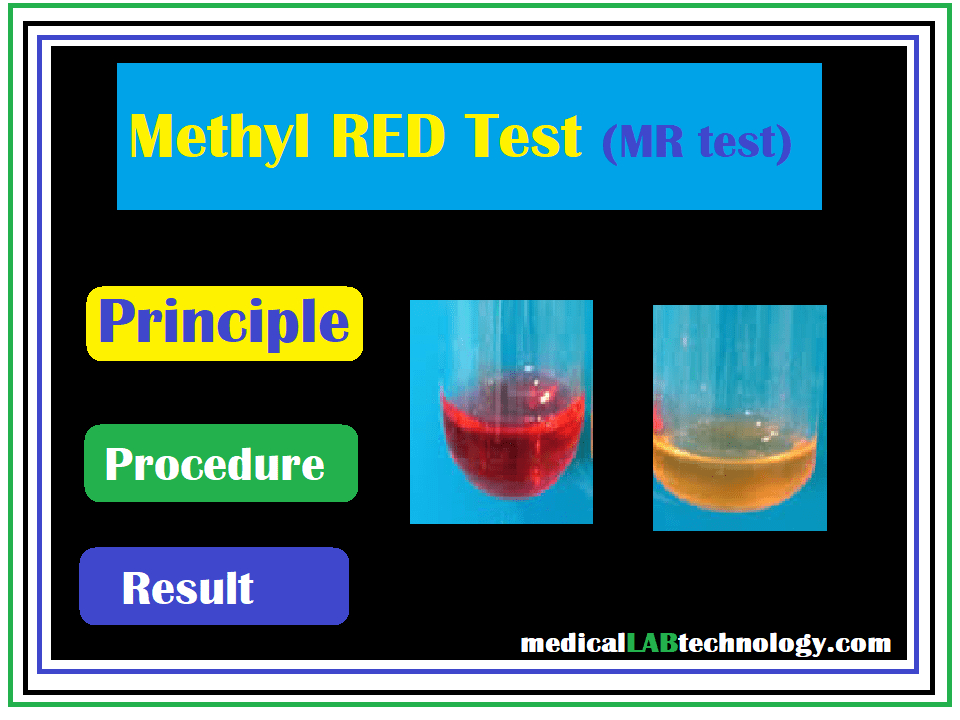Methyl red test or MR test is an important biochemical test used to differentiate enterobacteria. Methyl red is used as a PH indicator.
Methyl red test principle
Some bacteria create sufficient acidity from glucose to give RED color with methyl red. While other organisms do not produce more acidity from glucose.
Therefore in the negative case of the methyl red test, the yellow color of methyl red remains unchanged.
Methyl red test procedure steps
- Inoculate the 5 ml of buffered glucose phosphate peptone broth with a pure culture of the test organism.
- In the inoculated plate at 35 C for 48 hours.
- Now add 5 to 6 drops of Mr test reagent.
- Look for the color change, if the color changes from yellow to red
How to prepare methyl red test media?
The following are components of Mr test’s media.
- Buffered glucose peptone water
- Methyl red indicator
- Ethyl alcohol: 300 ml
- Methyl red: 0.5 g
- Distilled water: 200 ml
Methyl red test result
- Methyl red test result for E.coli positive. It turned yellow color to red.
- Klebsiella did not change the color of the media. It shows a negative result.
